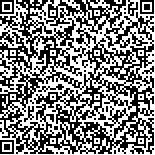下载中心
优秀审稿专家
优秀论文
相关链接
摘要

针对基于像素多特征的高分辨率遥感影像分类算法的"胡椒盐"现象和面向对象影像分析方法的"平滑地物细节"现象,提出了一种融合像素特征和多尺度区域特征的高分辨率遥感影像分类算法。(1)首先采用均值漂移算法对原始影像进行初始过分割,然后对初始过分割结果进行多尺度的区域合并,形成多尺度分割结果。根据多尺度区域合并RMI指数变化和分割尺度对分类精度的影响,确定最优分割尺度。(2)融合光谱特征、像元形状指数PSI(Pixel Shape Index)、初始尺度和最优尺度区域特征,并对多类型特征进行归一化,最后结合支持向量机(SVM)进行分类。实验结果表明该算法既能有效减少基于像素多特征的高分辨率遥感影像分类算法的"胡椒盐"现象,又能保持地物对象的完整性和地物细节信息,提高易混淆类别(如阴影和街道,裸地和草地)的分类精度。
With the improvement of spatial resolution of remote sensing image, the details, geometrical structure and texture features of ground objects have been better presented. As the same object type has different spectra or different object types have same spectrum, the statistical separability of different land cover classes in spectral domain is reduced, which is a great challenge to the traditional classification methods based on pixel-features for high spatial resolution remote sensing image. Classification accuracies based on pixel classification methods are improved by fusing pixel texture, structure and shape features. But the pixel-based multi-feature classification methods generally have the shortcomings of "salt and pepper" effect and computational complexity. In recent years, the Object Based Image Analysis (OBIA) method has been widely concerned. The basic characteristic of OBIA is homogeneous regions as processing units. OBIA method can solve "salt and pepper" problem within traditional methods, and overcomes the shortcomings among pixel-based classification methods. However, a large segmentation scale in OBIA leads to lose detail and present "excessive smoothing" phenomenon. In view of the "salt and pepper" phenomenon of pixel-based multi-feature classification methods and the "excessive smoothing" phenomenon of OBIA, a classification method which fused pixel-based multi-feature and multi-scale region-based features is proposed in this paper. (1) The over-segment image objects are obtained by mean shift algorithm. Then regions are merged based on the original over-segmentation results through multi-scale, and the multi-scale segmentation results are obtained. According to change of multi-scale regions merged index-RMI and the correlation between classification accuracy and segmentation scale, when the RMI change is small, the adjacent regions are merged, and the RMI change is significant, best segmentation results are obtained in the optimal scale and the adjacent regions merging processes are stopped. The correlation among segmentation scales, segmentation numbers and OA is analyzed. Finally, the optimal segmentation scale is determined. (2) Spectral features, shape features and multi-scale region features are extracted, then spectral features, Pixel Shape Index (PSI) features and region features of the original scale and the optimal scale are fused, and features of various types are normalized. Finally, the classification is implemented by Support Vector Machine (SVM). In order to test the effect of the proposed method discussed in this paper, two high spatial resolution hyper spectral remote sensing images are adopted. Some A series of experiment schemes are designed, which include classification methods using pixel-based LBP, GLCM and PSI features, Object-Based Image Analysis(OBIA), and single scale segmentation results by eCognition algorithms and Meanshift (MS). Classification results are evaluated by quantitative and qualitative methods, which. are confusion matrix, Overall Accuracy (OA) and Kappa coefficient as quantitative evaluation and visual discrimination as qualitative evaluation. The classification accuracy of the proposed method is higher than pixel-based multi-feature methods, OBIA method in eCogniton software and single scale classification results based on MS segmentation method. The experiment results show that the proposed method can effectively take advantages and reduce disadvantages of pixel-based and region-based classification methods and improve classification accuracies of different land cover classes.

